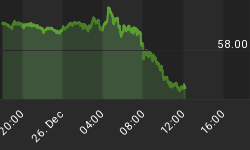When both the bullish and bearish scenario as outlined in last week's article point to higher prices ahead, it should come as no surprise that the SP500 advanced almost 6% in one week.
In the process, the SPX almost reached the target area where the index should stall according to the bearish outlook:

There are increasing signs that a change in the market's character is taking place, although market internals have not registered oversold levels yet. If anything, the negative divergence of market internals with price is indicative of an approaching swing top:

At this point, it may be useful to introduce another bullish/bearish chart set which may shed additional light on where the market is headed for the rest of the year.
The Bear Forecast, first published in December last year, shows a .75 correlation with price action in 2011. If the forecast remains accurate for the last quarter, then we should expect range-bound market action:

From a dominant cycle point of view, however, 2011 shows highest correlation with 1998. And if that continues for the months ahead, the current rally may have some legs:

















